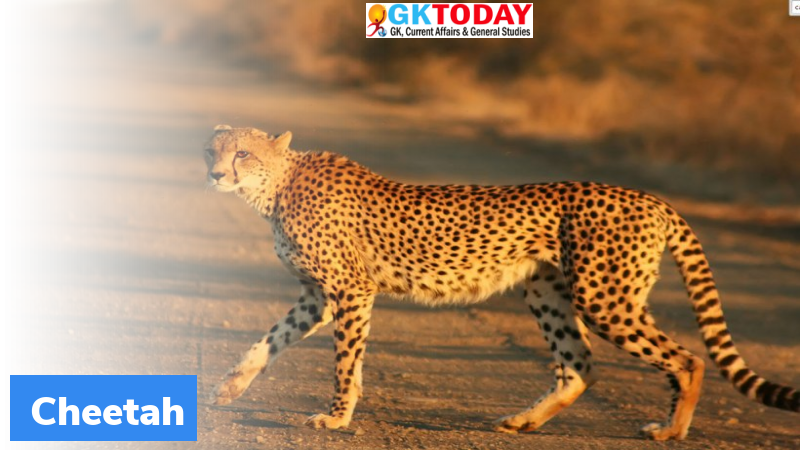Reintroduction of Cheetahs at Kuno National Park
The first batch of cheetahs are currently being brought from Namibia to be introduced into Kuno National Park in Madhya Pradesh. Prime Minister Modi would release 8 cheetahs into the national park on September 17.
Key Facts
- The Government is planning to reintroduce cheetahs, which became extinct in India in 1952.
- Asiatic cheetahs became extinct in India because of habitat loss, shrinking prey base, climate change and growing human population.
- Currently, Iran is the only country in the world to have living population of Asiatic cheetahs.
- India has been planning to introduce cheetahs since the 1960s and 1970s.
- However, this plan never came to fruition as Tehran refused to part with the critically low population of Asiatic Cheetahs.
- African cheetahs are slightly larger than their Asian counterparts. They are found all across Africa and are listed as vulnerable by the IUCN’s Red List.
- The first batch of African cheetahs would comprise of four females and four males.
- Cheetahs would be released and monitored within a 500 hectares of land that would be enclosed by an electrical fence.
- In about 15 years after the introduction, the cheetah population in India is expected to rise to a maximum of 21.
Kuno National Park
Kuno National Park in Madhya Pradesh was established in 1981 as wildlife sanctuary and was later given the status of national park in 2018. It was named after Kuno River, one of the major tributaries of the Chambal River. This river flows through the entire length, bisecting the national park. It was chosen by Wildlife Institute of India and Wildlife Trust of India as a possible habitat for the reintroduction of cheetahs. It was also chosen as a possible site to implement the Asiatic Lion Reintroduction Project, which seeks to establish a second lion population in India.
Month: Current affairs - September, 2022
Category: Environment Current Affairs


